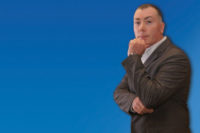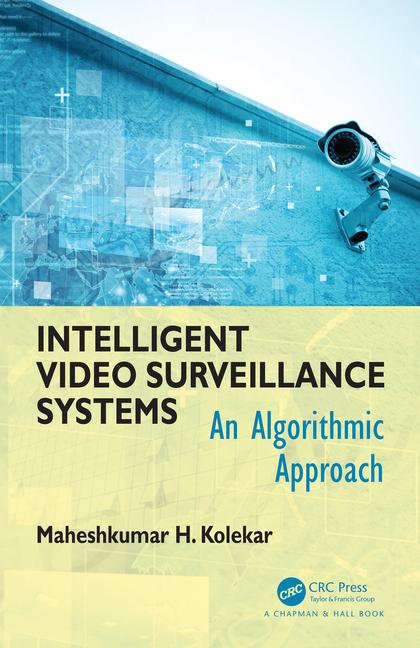How Remote Monitoring Adds Value from Afar
Remote monitoring services in intelligent buildings will continue to grow in usage during the next few years.

University Health Network monitors life safety and HVAC from substations in each facility but is planning to move toward centralized monitoring this year.

Remote monitoring has gained increased traction due to cost savings in tough economic times, which commercial and retail end users have benefitted from the most.




For Larry Heiss, general manager of Miller Ale House in Paramus, N.J., the business solutions provided by remote monitoring are pretty straightforward.
“We lock the doors and night, and the alarms go on,” he says of the system provided by Monitor America. “We have panic buttons and cameras. That’s pretty much it. Break-ins overnight, that’s mainly what it’s for, and panic buttons and cameras during the day. It’s worked well so far; we don’t think about it too often.”
The needs of an organization like University Health Network in Toronto are considerably more complex. The four-facility network – which encompasses Toronto Hospital, Toronto Western, Toronto Rehab and Princess Margaret Cancer Center – has about 500 cameras, intrusion alarm systems and panic devices at each facility, as well as life safety systems.
"We’re hoping to monitor for unauthorized access,” says Todd Milne, senior manager of security operations, about the camera networks and alarms provided through Johnson Controls Canada. “We have to balance safety and security with the need of healthcare for a person.” Remote monitoring of life safety and HVAC enables University Health to “respond a little quicker, and more efficiently and more accurately,” he adds.
Remote monitoring services in intelligent buildings will continue to grow in usage during the next few years, driven by commercial and retail, according to a study by IHS research Inc.
Third-party services that audit and report on a building’s operational performance provide benefits like recommendations on saving energy costs and reduction of internal staffing, the IHS study says. Providers typically demonstrate return on investment through pilot projects, which are then rolled out more widely. Education, government, data centers and hospitality are among the market sectors expected to benefit the most from such systems in the coming years, IHS reports.
Sam Grinter, market analyst for building technologies at IHS, says that remote monitoring has gained increased traction due to cost savings in tough economic times, which commercial and retail end users have benefitted from the most. “Facility managers are increasingly being stretched in terms of resources,” he says, and as such they’re being required to monitor more buildings per person.
The economic picture during the past five years definitely has had an impact, Grinter says. “Business growth has been fairly low throughout the global climate, especially in America and Europe. There are fewer tenants in buildings, and they’re paying lower rent, so building owners are trying to make economies as flat as possible.”
Along with hiring fewer managers and expecting them to monitor a wider array of properties, building owners are investing less in them and requiring less of a deep skill set, Grinter says. “They’re no longer an engineer, necessarily,” he says. “Some are now a general manager who’s just had some training. The systems have to be very user-friendly – it’s not just a spreadsheet, but a visual diagram of the building, to make it easier for facility managers to do the job.”
Building owners are doing everything they can to reduce energy consumption, especially during the winter months, Grinter says, which can include standard remote monitoring of HVAC as well as turning to a “new breed of energy management providers” that analyze energy bills and meter readings and perform “a trend analysis to identify where savings can be made,” he says. “The more simple you can make this, the better.”
University Health Network monitors life safety and HVAC from substations in each facility but is planning to move toward centralized monitoring this year, Milne says. “One person can monitor that way, instead of three,” he says. “It will allow us to be that much quicker. That’s our focus for 2014. It will be state-of-the-art if we can bring this all together.”
The security systems already have centralized monitoring along with the substations at each building, Milne says. The remote cameras “possibly help us to identify persons who may be suspicious,” he says. “We do have a pretty good network of persons who we know make careers out of healthcare theft opportunities.”
University Health Network has cameras inside and outside of its facilities, in parking lots, surface lots, perimeter areas and high-risk areas inside such as pharmacies.
“Our central control center monitors these locations,” he says. “We have intrusion alarm systems, [and] we have panic devices, primarily for the high-risk areas that we need to monitor as per regulations.”
Johnson Controls Canada provides a system called the Remote Operations Center, or the ROC, which amounts to an across-the-board solution to fire and flood, temperature control and physical security, says Ralph Staffiere, a systems integrator.
“We’re here to try to make their life as easy as possible and let them concentrate on their day-to-day operations, and not the building operations,” he says. “By us providing an integrated solution, we make sure tenants have a safe environment to come into.”
Johnson Controls can monitor multiple commercial real estate buildings and integrate the video, Staffiere says. “We can bring the front door of individual buildings onto one screen rather than pulling up individual ones, if and when required,” he says.
Lamarco Systems in Chicago uses products to provide remote monitoring via video for mostly corporate buildings as well as some city of Chicago and Chicago Housing Authority facilities, says Marat Sedenkov, president.
“In the corporate world you have several different locations, and it’s difficult to guard every location,” he says. With the cameras, “They can see what’s going on in the parking lot and the common areas of the building … dispatching security if necessary, if they have actual evidence of a crime. In our world today, video plays the role of verification technology.”
Alarm systems work hand-in-hand with the video, which can provide visual evidence that, for example, someone was trying to break in and then ran away when the alarm went off, Sedenkov says. “You can program the system so that if somebody is getting close to the emergency door, it can send you an e-mail with images right away,” he says. “The image says, ‘Hold on, this is not a false alarm.’”
The systems, manufactured by Bosch, work over the Internet rather than phone lines, as most do in the mid 2010s, which eliminates the formerly vexing problem that they went down whenever phone service was out, Sedenkov says. “It’s allowed us to do the remote download and given us the ability to manage the system remotely,” he says. “It’s a solid system; it’s bulletproof.”
Previously, he adds, “I would be dealing with lots of false alarms and lots of unhappy people, and trying to explain that this is not a problem with the alarm, this is a problem with your phone line. What makes an installation successful is that you walk in a building, and the customer is not dealing with anybody except you. It’s just you and the end user. You don’t tell the end user, anymore, ‘You have to talk to your local phone company to provide the proper communication.’”
Larger and more complex facilities increasingly are expecting their intelligent systems to run on a common information technology platform, which works well so long as they come from the same vendor, Staffiere says.
“It’s second nature, as far as they’re concerned. It does pose challenges,” he says. “The dilemma is when the break up or segregate, and give Contractor X certain systems and Contractor Y certain other systems, and then bring me in and say, ‘Make them talk.’”
Putting all systems under one umbrella makes them “future proof” in the sense that a facility can build onto them without worrying about which contractor is responsible for what, Staffiere says. Otherwise, “if you upgrade, who’s responsible to make sure it integrates with your existing legacy systems?” he asks.
Remote Monitoring of Intelligent Buildings…To Go Where No One Has Gone Before
You don’t need to be a Trekkie to know that the future is now when it comes to monitoring services. Every day, our industry is filled with stories about the advent of video monitoring, the rise of PERS and lately, the last great frontier: remotely monitoring building environments.
The principal benefit of remote building monitoring is the possibility of huge savings on energy costs as well as other manpower savings – why pay people when you can have a holistic environmental control system actually watch over a bank of dials and readouts? Machines don’t get tired or get distracted. Except of course, they sometimes don’t work – and that’s where our industry has a chance to grab a piece of this new monitoring pie.
It would seem that security monitoring facilities are ideally positioned for adding these types of signals to their lists of services, and in doing so, can open up a new revenue channel. However, there are a number of issues that may be holding back widespread adoption of environmental monitoring by central stations.
First, central stations have had one mindset for the past 100 years – intrusion. Receive the alarm. Verify and then notify authorities as needed. Rinse and repeat. This is a mantra upon which our industry has been built. The idea of expanding PERS services into non-PERS central stations, let alone the coming expansion of video verification of alarms (into which the industry is being dragged kicking and screaming) as a mainstream way of handling alarms over the next three to five years, is making the average central station owner’s head explode. Suddenly, the idea that a central station can be a primary or backup facility for monitoring building environments is daunting. There is too much change happening to focus on it.
It’s especially concerning to owners when they consider the following: What are the relevant U.L. and industry standards? What is my liability if the air-conditioning in a building fails and I don’t detect it? What additional training do my operators need? What additional investment do I have to make in equipment in order to receive signals? How do I learn about the machines that will send me signals?
These concerns and more will have to be addressed if environmental monitoring is ever to gain a foothold in a standard central station.
About the Author: Jay Stuck is a 20-year security industry veteran. He is CMO of Monitor America, LLC., a new central station based in New Jersey.
Looking for a reprint of this article?
From high-res PDFs to custom plaques, order your copy today!










